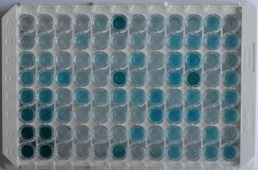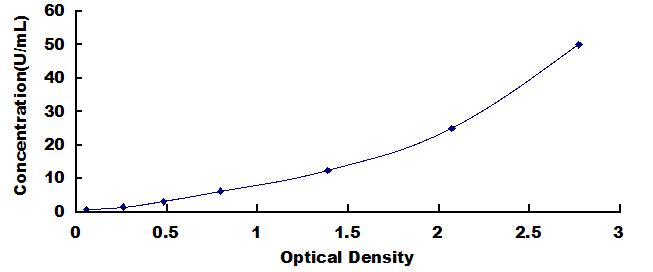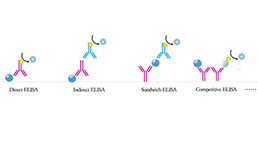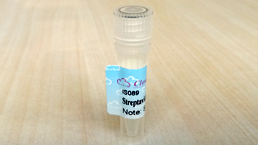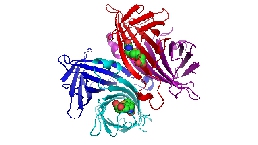Packages (Simulation)

Reagent Preparation

Image (I)
Image (II)
Certificate


ELISA Kit for Carbohydrate Antigen 19-9 (CA19-9)
CA199; Sialylated Lewis(a)Antigen; Cancer Antigen 19-9
- Product No.SEA156Si
- Organism SpeciesRhesus monkey (Simian) Same name, Different species.
- Sample Typeserum, plasma, tissue homogenates, cell lysates, cell culture supernates and other biological fluids
- Test MethodDouble-antibody Sandwich
- Assay Length3h
- Detection Range0.78-50U/mL
- SensitivityThe minimum detectable dose of this kit is typically less than 0.31U/mL.
- DownloadInstruction Manual
- UOM 48T96T 96T*5 96T*10 96T*100
- FOB
US$ 504
US$ 720
US$ 3240
US$ 6120
US$ 50400
For more details, please contact local distributors!
Specificity
This assay has high sensitivity and excellent specificity for detection of Carbohydrate Antigen 19-9 (CA19-9).
No significant cross-reactivity or interference between Carbohydrate Antigen 19-9 (CA19-9) and analogues was observed.
Recovery
Matrices listed below were spiked with certain level of recombinant Carbohydrate Antigen 19-9 (CA19-9) and the recovery rates were calculated by comparing the measured value to the expected amount of Carbohydrate Antigen 19-9 (CA19-9) in samples.
| Matrix | Recovery range (%) | Average(%) |
| serum(n=5) | 79-92 | 88 |
| EDTA plasma(n=5) | 99-105 | 102 |
| heparin plasma(n=5) | 83-101 | 95 |
Precision
Intra-assay Precision (Precision within an assay): 3 samples with low, middle and high level Carbohydrate Antigen 19-9 (CA19-9) were tested 20 times on one plate, respectively.
Inter-assay Precision (Precision between assays): 3 samples with low, middle and high level Carbohydrate Antigen 19-9 (CA19-9) were tested on 3 different plates, 8 replicates in each plate.
CV(%) = SD/meanX100
Intra-Assay: CV<10%
Inter-Assay: CV<12%
Linearity
The linearity of the kit was assayed by testing samples spiked with appropriate concentration of Carbohydrate Antigen 19-9 (CA19-9) and their serial dilutions. The results were demonstrated by the percentage of calculated concentration to the expected.
| Sample | 1:2 | 1:4 | 1:8 | 1:16 |
| serum(n=5) | 85-101% | 78-92% | 80-99% | 87-101% |
| EDTA plasma(n=5) | 93-101% | 78-93% | 82-99% | 89-98% |
| heparin plasma(n=5) | 85-92% | 80-90% | 78-98% | 84-103% |
Stability
The stability of kit is determined by the loss rate of activity. The loss rate of this kit is less than 5% within the expiration date under appropriate storage condition.
To minimize extra influence on the performance, operation procedures and lab conditions, especially room temperature, air humidity, incubator temperature should be strictly controlled. It is also strongly suggested that the whole assay is performed by the same operator from the beginning to the end.
Reagents and materials provided
| Reagents | Quantity | Reagents | Quantity |
| Pre-coated, ready to use 96-well strip plate | 1 | Plate sealer for 96 wells | 4 |
| Standard | 2 | Standard Diluent | 1×20mL |
| Detection Reagent A | 1×120µL | Assay Diluent A | 1×12mL |
| Detection Reagent B | 1×120µL | Assay Diluent B | 1×12mL |
| TMB Substrate | 1×9mL | Stop Solution | 1×6mL |
| Wash Buffer (30 × concentrate) | 1×20mL | Instruction manual | 1 |
Assay procedure summary
1. Prepare all reagents, samples and standards;
2. Add 100µL standard or sample to each well. Incubate 1 hours at 37°C;
3. Aspirate and add 100µL prepared Detection Reagent A. Incubate 1 hour at 37°C;
4. Aspirate and wash 3 times;
5. Add 100µL prepared Detection Reagent B. Incubate 30 minutes at 37°C;
6. Aspirate and wash 5 times;
7. Add 90µL Substrate Solution. Incubate 10-20 minutes at 37°C;
8. Add 50µL Stop Solution. Read at 450nm immediately.
GIVEAWAYS
INCREMENT SERVICES
| Magazine | Citations |
| Medical Oncology | Expression and clinical significance of apolipoprotein E in pancreatic ductal adenocarcinoma Pubmed: 23609192 |
| Biochimica et Biophysica Acta (BBA) - Proteins and Proteomics | Bile carcinoembryonic cell adhesion molecule 6 (CEAM6) as a biomarker of malignant biliary stenoses Pubmed:23806607 |
| 中国现代医学杂志 China Journal of Modern Medicine | 膜联蛋白A1 和CA19-9 在胆管癌中的表达及其临床意义 article:8686 |
| ACS Applied Bio Materials | Combined Detection of CA19-9 and MUC1 Using a Colorimetric Immunosensor Based on Magnetic Gold Nanorods for Ultrasensitive Risk Assessment of Pancreatic … |
| Catalog No. | Related products for research use of Rhesus monkey (Simian) Organism species | Applications (RESEARCH USE ONLY!) |
| SEA156Si | ELISA Kit for Carbohydrate Antigen 19-9 (CA19-9) | Enzyme-linked immunosorbent assay for Antigen Detection. |

